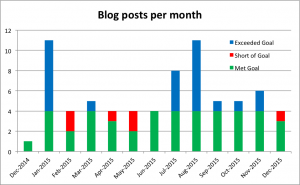(Full disclosure, unlike recent blog posts, this post was not reviewed or edited by an AI before it was published. What you see is what you get from the real, organic, me.)
After the past few articles, I thought I’d pause to reflect for a moment on what I thought about my recent co-writing with AI experiences.
Less soul
First up, it’s been a bit weird to watch my first drafts transform into the finished blog posts. It has seemed like work, for starters. Running my copy through an editor, revising, discussing revisions, more revising, and ultimately publishing (or not in a couple of cases). Sounds like a job to me, as compared to just me, myself, and I working through a few iterations before publishing.
As I review the interim versions, I see myself slipping away, then I re-insert myself, then the AI applies more style guide, and then I take that back, etc. What I think this really means is that I need to work on the guiding prompt to reduce some of this back-and-forth.
More organization
As it removes my soul, I think the resulting content is more organized and, perhaps, easier to read at the end of the process. Or rather it seems to have less of MY soul. Despite crafting an AI prompt to produce my “style.” Does this mean that my natural writing is disorganized?
Perhaps.
I prefer to think of myself being “differently organized.” I think my natural, blog-post writing has more of a “stream-of-consciousness” feel, although I try to keep it understandable–and I rarely publish a first draft. It seems like changing the organization to suit the audience removes the “authentically human” nature of the non-AI articles. Again, perhaps another clue to do some maintenance on the prompts.
Less satisfying
I enjoy sharing my experiences by way of this blog, but the “feels like work” aspect sucks some of that fun out of the process. I no longer have the same sense of accomplishment when I press Publish like I recall having in the past. It’s more of a sense of relief that I’m finally finished with the damned post!
More learning
I feel as though having the robot editor review and edit the blog drafts gives me an external perspective on my writing. Having an editor who’s reviewed umpty-bazillion documents before mine can be a bit intimidating, yet instructive at the same time. In that sense it’s very much like the working with the best editors I’ve had in the past. Both I and my writing come out better for having the experience.
It’s comes down to trust
I think most of my feelings of unease stem from the fact that I don’t trust my AI editor at some level. Its confident evaluation the I did “X” which evaporates the instant I said, I did “Y”, to which it agrees just as enthusiastically is not confidence inspiring. This “No two answers are the same” property of LLM-GPTs seems like it should be a showstopper right out of the gate (a bias that likely comes from my decades of experience with the old, predictable computers and their crazy, deterministic algorithms). While, that’s a property that can be managed, it still leaves me a bit anxious.
I’m not ready to abandon my AI-overlord, er, I mean co-writer, just yet. We’ll keep working together to come to some level of agreement and, maybe even a level of trust.
But if I’m honest; the idea of having AI agents running un-checked is still nightmare fodder for me. Maybe that’s my next nightmare I need to confront and overcome?



